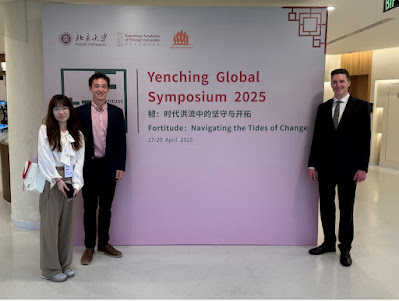The Case of Domestic vs International Chinese SOEs
While on the inaugural experiential learning trip to Peru this past April, Rebecca Ash-Cervantes noticed interesting characteristics of Chinese State-owned enterprises (SOEs) and their operations on an international level. Rebecca reflects on the role and nature of Chinese domestic and international SOEs through a case study of Chalco/Chinalco in Peru.
Chinese state-owned enterprises (SOEs) have been a staple in the Chinese economy since the Chinese Communist Party (CCP) took control of Mainland China in 1949. As most know, the change of regimes as a result of the revolution also led to a change in the various systems running the country, with the economy being a principal part of reforms. A central aspect of economic reform was the transition of 80+% of private companies to state ownership. Accounting for over 40% of of China’s current GDP, China’s SOEs are essential to the nation’s economic development and growth.
But what are SOEs?
State-owned enterprises (SOEs) are, in short, companies that are created by and/or owned by the government, as opposed to being privately-owned institutions, for the purpose of participating in the market. In the case of Chinese SOEs, these are companies owned by the Chinese government. What this means is that, as opposed to allowing for the free market and invisible hand to work to craft market equilibrium, the government has a large influence on whether these companies succeed or fail. Different than the bailouts seen in the US in 2008, a clear example of government intervention in market matters, an SOE has constant, direct interaction with the state, with the state having the final say or strong influence on many of the company’s decisions and direction. China is not unique in having SOEs. Railways, postal services, arms manufacturing, natural resources and energy, and so on are common services provided by SOEs in many nations around the world. In fact, it is often protested by citizens when such services are privatized or outsourced outside of the country, as one can see with the example of Bolivian protests against the privatization of water, or the Puerto Rican protests against the privatization of the power grid.
However, state-owned companies are generally restricted to the states of which they are owned, as the services they provide are often for basic necessities (water, electricity) and development (infrastructure, industry), though there are sectors (such as oil) where this is not the case. Chinese SOEs are in the latter category, in that they can be found both domestically, as well as internationally.
Being Chinese government entities, SOEs are held to very specific standards that must align with the values and goals of the CCP, since the companies are essentially party-state extensions. And it is this particular point that has difficulty translating into the international sphere.
The Case of Chalco/Chinalco: SOE Management in the Mainland vs Peru
中国铝业股份有限公司, also known as Chalco, is a multinational aluminum SOE based in Beijing. Among its multinational branches is Chinalco, based in Lima, Peru. The Lima-based office and operations are run in Chinese, Spanish, and English, with young, trilingual Chinese translators placed as part of the Chinese team, which consist of 3 head managers and a handful of other administrative employees. The bulk of the Chinalco team is Peruvian, which does differ from typical Chinese SOE behavior, in that they usually involve importing an almost exclusive Chinese team into the host country to run the company or project.
Essentially, the companies are run like Chinese SOEs in China, but in a different country. The employees are sometimes even restricted in their interactions with the local community, which further prompts a very isolated experience outside of China. Outside of the issues this causes with the Chinese employees, who feel that they never get to know or integrate into their host communities, this also usually creates conflicts between the Chinese SOE and host community, as promises of economic opportunities for the local community are neglected. In a shift from this model, Chinalco has minimal Chinese staff who are mostly at the higher-level decision-making positions. Day-to-day decisions are left up to the discretion of the local Peruvian team. The handful of Chinese employees are also allowed to interact with the local community and are generally unrestricted in what they do.





